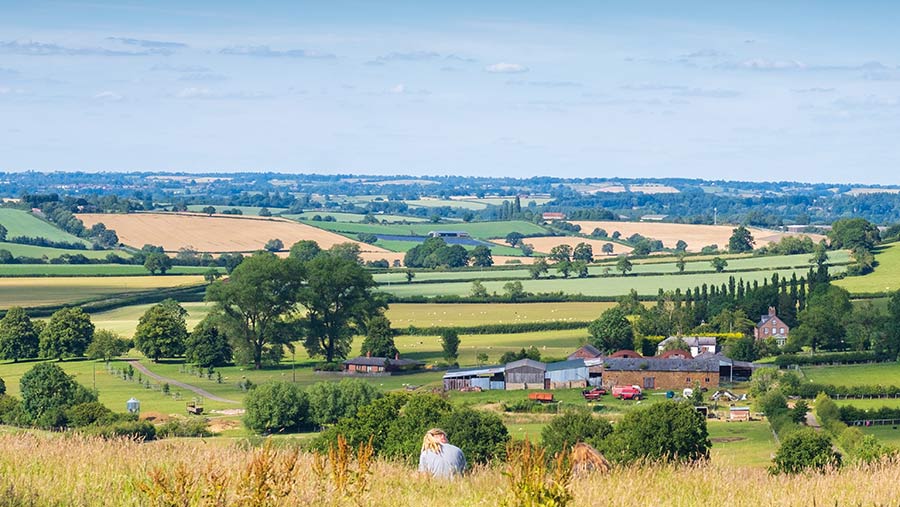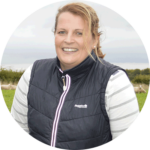Tips to keep farms profitable in face of rising inputs
 © AdobeStock/C Christopher
© AdobeStock/C Christopher Six experts give their top tips to ensure farm businesses remain profitable in the face of rising input costs and volatile commodity markets
See also: How to stress-test your farm business against high inflation
Utilising land

As a 10-year-old mixed farming business, it’s about playing to our strengths.
Rather than trying to expand, it’s about utilising our land to its optimum potential. So our arable enterprises are on our best land and we use the poorer land for sheep.
We’ve also started a sheep dairy enterprise. It has the potential to be a real cash generator.
Our entire focus is about trying to create a closed-loop farm where we buy in as little as physically possible – and sell as much as physically possible.
Setting up any enterprise without an established supply chain is difficult.
We have de-risked the sheep dairy by making sure it is low-investment, by not having a very intensive system, and making sure we are flexible.
We finish the sheep entirely off home-grown forage.
We don’t buy in any feed; we do still buy some fertiliser but we have other ways of keeping that in check – using our livestock, using technology and our cropping.
Every penny we spend and intend to spend for the next five years is on a spreadsheet. We budget and model everything.
As soon as a price or cost changes, we can see how it will affect us and we adjust things accordingly.
Jo Franklin, Hertfordshire sheep and arable farmer
Budgeting and planning

We’re in a situation at the moment where cash is clearly king. Ag inflation means people need a lot more working capital simply to run their business.
Budgeting and planning ahead is key to success.
As a banker, there’s little worse than getting a call on a Friday from a farmer who needs to borrow extra money to pay for something on Monday. Farmers need to be forward planning.
That’s a given for most farms, but you also need to be horizon scanning – looking ahead to identify risks to your business that you can’t always put into a cashflow, such as the extreme weather. Successful farmers do that really well.
The important thing is recognising uncertainty and planning for the worst case.
That’s what we ask borrowers to do – because there’s nothing worse than agreeing a borrowing limit and then having to revisit it three months later because you didn’t build in all factors.
Take the opportunity to de-risk your business where you can.
If you’re looking at borrowing, for example, we have a good indication of where interest rates are heading over the next few years, so consider a fixed rate.
Adam White, head of agriculture at Barclays UK
Integrating environment

There is a real opportunity at the moment for the environment to generate significant amounts of cash for the farm.
But you need to make sure it is a good fit for your own particular situation.
If you are an intensive vegetable grower, for example, it might not be easy to integrate something like biodiversity net gain into your wider farming operation.
But it might be a more natural fit for a less-intensive farm business, with land already in stewardship.
You also need to take a long-term view. Biodiversity net gain is about long-term land management.
Some of these agreements are for 30 years or more, so you really need to understand how it fits in with your business’s objectives.
Once you know how it will integrate into your business – both in terms of land ownership and succession – it’s then about deciding what sort of financial return you need for it to be worthwhile, or whether you will be taking a more holistic view.
Incorporating the environment into your other core products is going to be increasingly important for farmers – and will have a significant value in the marketplace as well, generating an additional income stream.
Jon Dearsley, head of natural capital, Savills
Data, budgeting and marketing

The most important impact on profitability is price – which is a factor largely outside our control as farmers. But it’s how we react to that factor which really determines profitability.
That comes down to how well the farm business is managed. More technically efficient farms achieve the highest profits.
That means knowing your data, measuring your parameters and farming as best as you can in the circumstances.
For budgeting, the important thing is to know your actual cost of production, rather than relying on standard figures.
You need to know if your costs are higher than the market value of the crops or livestock you are producing.
Good marketing and high standards are important.
You have to be doing the job right to achieve the right prices from supermarket buyers – and that means convincing consumers that they should be rewarding farmers for reaching those high standards.
Our wheat markets are geared towards barn fillers.
Before planting, we always ask our merchants about the prospect for premiums, particularly on Group 3 or Group 4 wheats, so we know whether to keep them separate.
If your production costs are higher than the market value, you need to look at alternative enterprises that generate a profit.
That might mean enterprises in addition to, or other than, food production.
Richard Taylor, farming director, Strutt & Parker, Yorkshire
Scrutinise costs

In the immediate short-term, we are focusing on input costs, especially nitrogen fertilisers.
We scrutinise data – especially our five-year average yields – as well as crop performance in the current season.
It’s about knowledge – how the nitrogen cost per kilo fits in with our average yield and the price we can achieve per tonne of grain.
Fertiliser is more expensive for this coming season, so we are focusing on efficiencies – making sure every operation is justified.
This spring, for example, it meant we were able to reduce our nitrogen use across the farm by 15-20% – without a corresponding reduction in yield.
Within that, we also sought to use our nitrogen more efficiently.
We put on an extra pass of soil-applied nitrogen and also added 40kg of foliar feed nitrogen at the T2 timing, mixing it in with the fungicide.
We are now using the crop performance data from this harvest to inform what we do next year.
In the longer term, we are looking at taking as much risk out of the business as possible, perhaps widening the rotation or bringing pulses in.
They have a low nitrogen requirement and give a good entry to the following crop.
More broadly, we now make sure we can justify every operation we do – that it is a needed operation and that it’s not going to have any unintended consequences.
Matt Culley, Hampshire farmer and NFU combinable crops board chairman
Understand risks

It’s about doing your homework – and making sure you get good advice.
Something like biodiversity net gain is an emerging market and yes, you need to think about how it might fit within your system.
There are opportunities, but it’s also about being very clear about any risks that you might be taking on – including thinking through the tax situation.
Changing land use might affect your agricultural property relief for inheritance tax, for example.
There are also outstanding questions about how the income from biodiversity net gain might be treated for tax purposes.
That is something we are working on with government – lobbying to get a good outcome for our members.
If you are not sure about anything then I would always suggest taking advice.
That goes for when you’re thinking long term too. It’s important to think long term, but it can be difficult and is not something that necessarily comes very naturally.
With much of the new environmental proposals, there is a lot more detail to come. Most people are going to need a great deal more clarification but there will undoubtedly be opportunities.
There will also be costs – it won’t be a case of money for nothing. Whatever you do, you have to be sure it is right for you and your farm.
Susan Twining, chief land use policy adviser, Country Land & Business Association
Our experts
Our panel were speaking during two Farmers Weekly Transition Question Time sessions, held during last month’s Cereals event at Duxford, Cambridgeshire
